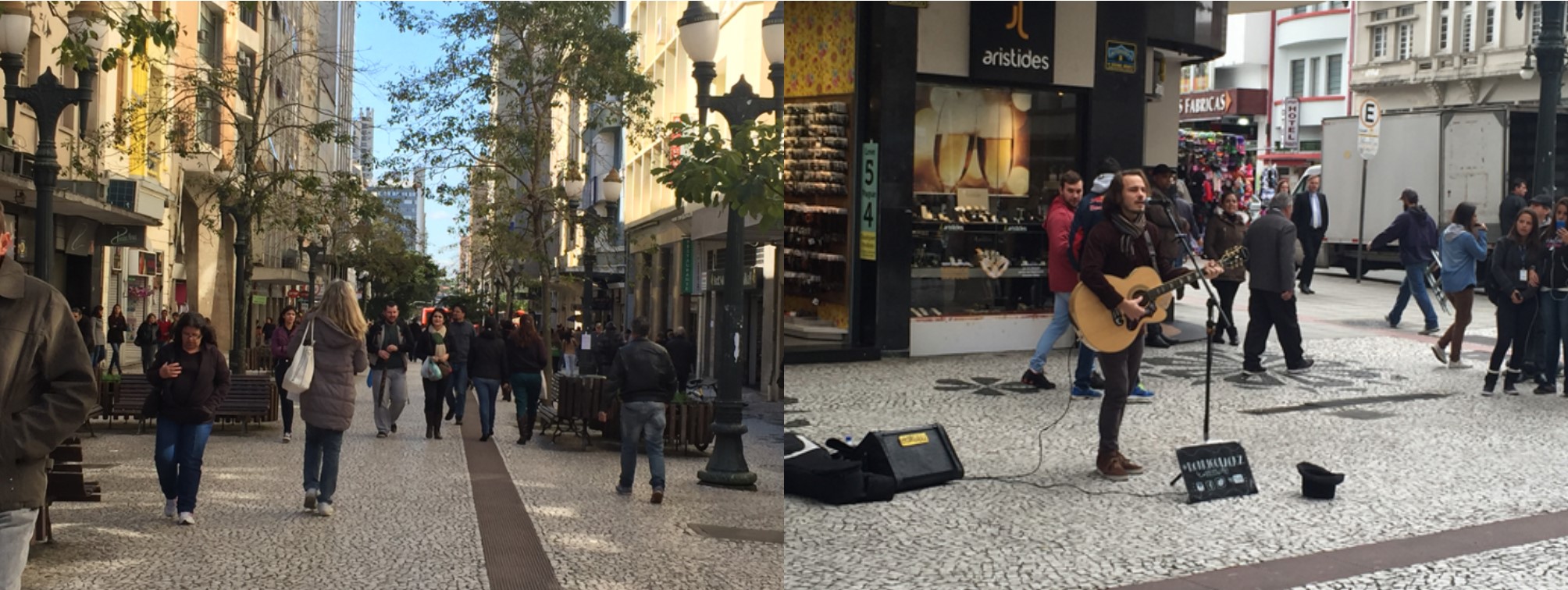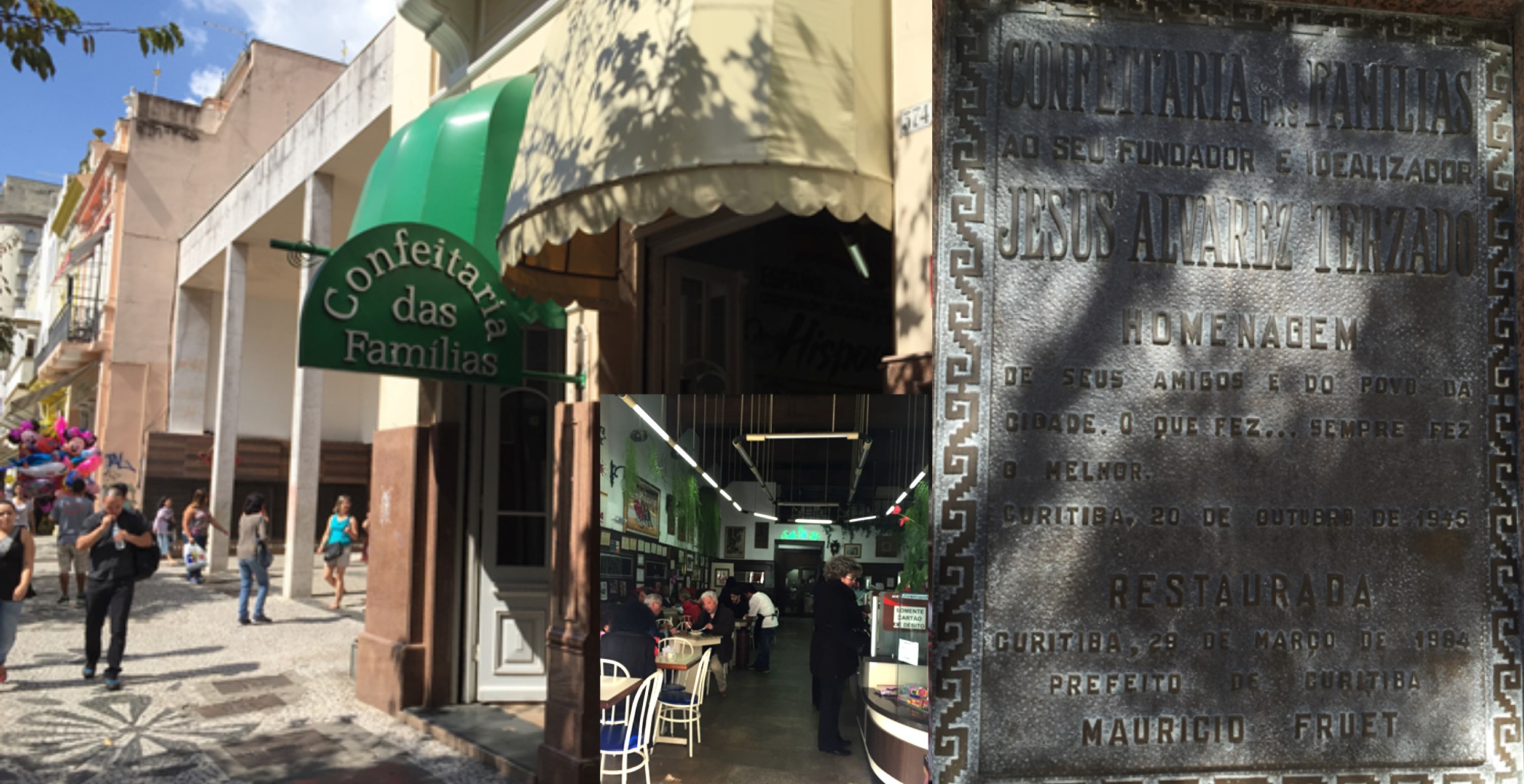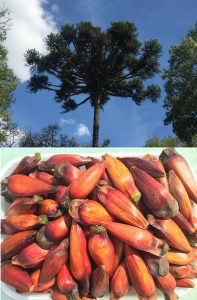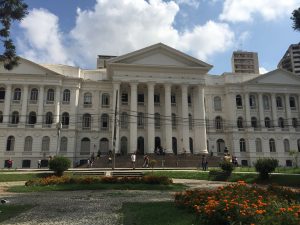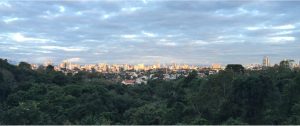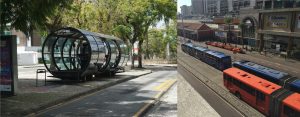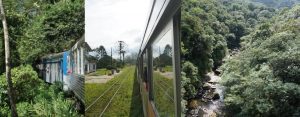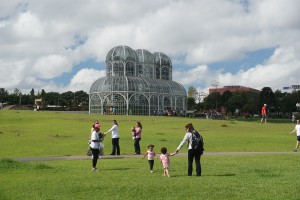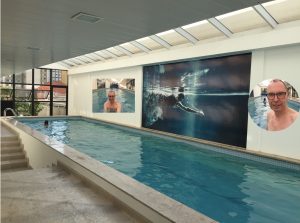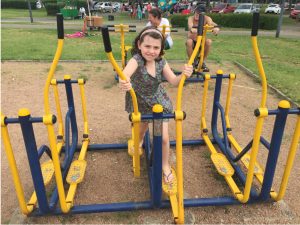If you are new to Curitiba I recommend, at the first available opportunity, probably your first weekend to take the city tour by bus. Called the Linha Turismo, it is the perfect way to get to know the city and its best attractions. The tour starts from a square in the centre of the city called Praça Tiradentes. Buses run every half hour starting at 9 am. Your ticket gives you five vouchers which allows you to get on and off the bus four times along the route. There are more than four places worth seeing so I suggest you see those places further from the centre and more difficult to get to and leave the more central places for another day. However, I recommend you get an early bus as you will need most of the day to do and see the things I suggest.
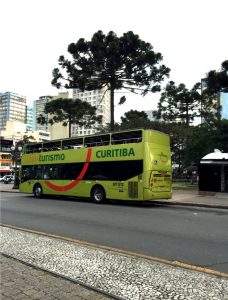 Check the weather forecast before buying your ticket, although there are lots of things to see indoors, it is a much better experience when it is not raining as there are several parks to see. I have copied the itinerary from the official “Linha Turismo” website so you do not have to leave the blog. However, I have added some comments and recommendations of where to visit. If you cannot go on a weekend, do not go on a Monday as some of the attractions are closed.
Check the weather forecast before buying your ticket, although there are lots of things to see indoors, it is a much better experience when it is not raining as there are several parks to see. I have copied the itinerary from the official “Linha Turismo” website so you do not have to leave the blog. However, I have added some comments and recommendations of where to visit. If you cannot go on a weekend, do not go on a Monday as some of the attractions are closed.
PRAÇA TIRADENTES

Considered to be the tour’s starting point. A busy traditional square with lots of tubular bus stops. The “Catedral Basílica de Nossa Senhora da Luz” is located here and worth a visit. Built in Gothic style, it was renovated for its centenary in 1993. Don’t forget to look down at your feet and see the wonderful designs in the “calçadão” and look up to the heavens to see the famous Paraná Pines Araucaria angustifolia.
RUA DAS FLORES
Rua XV de Novembro (15th of November Street) is one of the major streets in central Curitiba. Also known as Rua das Flores (Flower Street), it was the country’s first “calçadão” (Pedestrianised street with black and white decorated stones under foot), inaugurated in 1972. Calcadões are one of the hallmarks of the city’s cultural revolution. It is very common to see every kind of artistic performance, such as mime artists and clowns who interact with those who pass by, musicians, magicians and other miscellaneous performers, such as the Statue Man. You can go to Rua XV anytime so don’t use one of your stops here.
The street has the oldest Confeitaria (Coffee shop) in the city opened in 1945
First time: 9:06 am Last time: 5:36 pm
RUA 24 HORAS
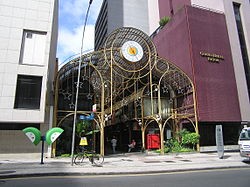
Rua 24 Horas was opened by Jaime Lerner, the mayor of Curitiba, in 1991. It initially opened 24 hours a day. The mall closed in 2007 for renovations and reopened in 2011. On reopening, the hours were limited to 9:00 AM to 10:00PM. The street displays once again the architecture that made it known worldwide, with the large arches and the 24-hour clock. No worth using one of your stops here.
First time: 9:12 am
Last time: 5:42 pm
MUSEU FERROVIÁRIO & SHOPPING ESTAÇÃO
Built in the old railway station, it shows how the station would have looked a century ago. The building next to it is the Shopping Estação mall, The mall and the museum are directly opposite my apartment block and are worth a visit but not on your first weekend.
First time: 9:21 am
Last time: 5:51 pm
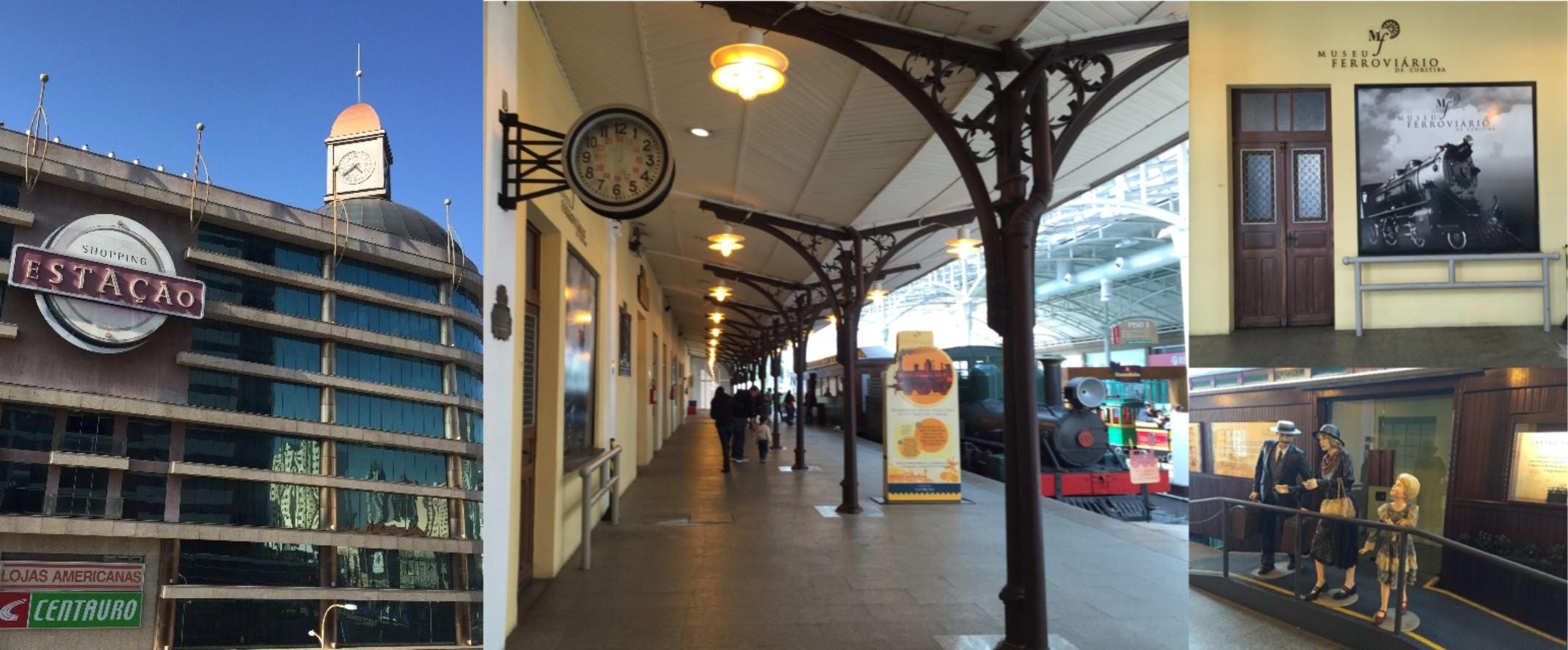
TEATRO DO PAIOL
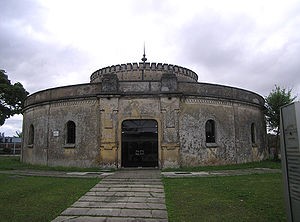
Built in 1906, the old gunpowder storeroom was “recycled” into an arena shaped theatre in 1971. Blessed by the poet Vinícius de Moraes, it marks the beginning of Curitiba’s cultural transformation.Not worth using one of your stops here.
First time: 9:30 am
Last time: 6:00 pm
JARDIM BOTÂNICO
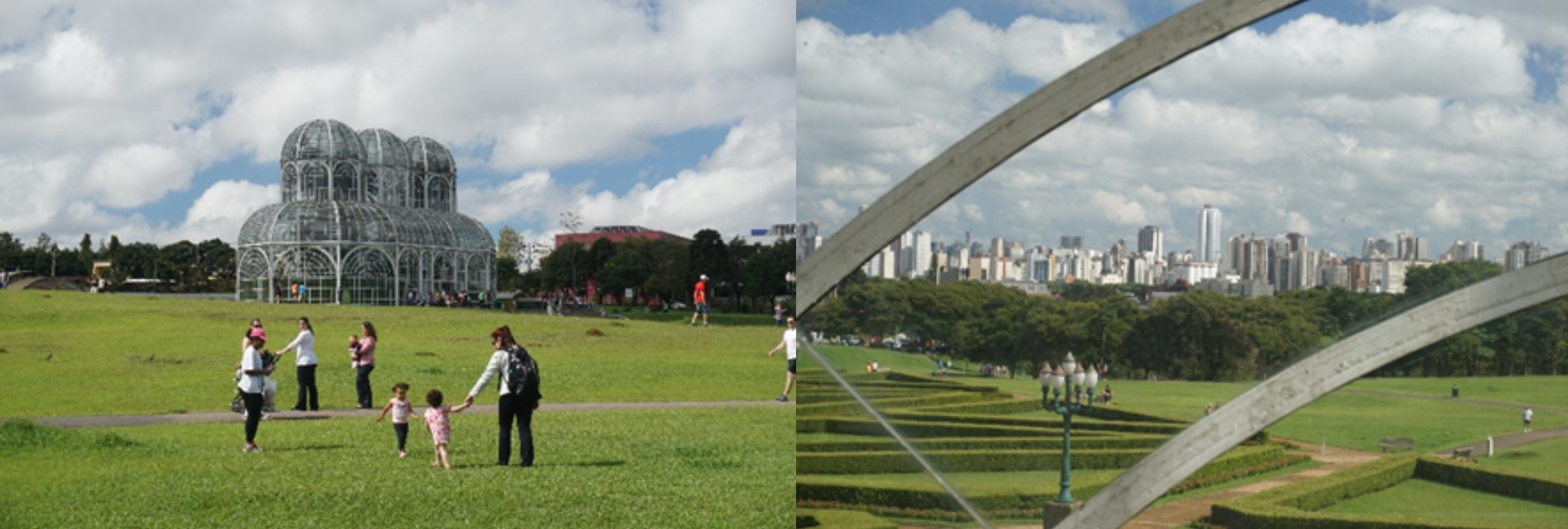
Curitiba’s landmark, it was opened in 1991. Its metallic greenhouse holds botanical species that are national references and attracts researchers from all over the world. I would make this your first stop of the day.
First time: 9:42 am
Last time: 6:11 pm
RODOFERROVIÁRIA & MERCADO MUNICIPAL

On its inauguration in 1972, the Rodoferroviária represented a mark for the country regarding transportation terminals, due its modern and functional conception. It is the place to take the Serra Verde Express to Morettes. The Municipal market, opposite is the traditional place to buy fresh meat and fish, fruits and vegetables and other products from around the world. Look at my video blog to see what I bought. Worth a visit but not on your first weekend. http://www.intercambiohelp4u.com/gringoinbrazil/mercardo-municipal/
First time: 9:51 am Last time: 6:20 pm
TEATRO GUAÍRA/UNIVERSIDADE FEDERAL
The Teatro Guaíra is located in the Praça Santos Andrade, and it’s one of Latin America’s largest theatres. It is in fact three theatres in one. On the other side of the square, is the Federal University of Paraná, the first University in Brazil. Not worth getting off the bus for but certainly worth going to a concert or the ballet.
First time: 9:57 am
Last time: 6:26 pm
LIBERTY PALACE
It’s a construction dating from 1916 and was the former City Hall of Curitiba. Built in brick over concrete blocks and masonry in a neoclassical and art nouveau style. It is registered by Institute of Historical and Artistic Patrimony (IPHAN). Currently it is a cultural centre. Not worth getting off the bus for but the square in front and the building itself are worth a look on a walk around the centre.
First time: 10:03 am
Last time: 6:32 pm
MEMORIAL ÁRABE & PASSEIO PÚBLICO
Located in the Praça Gibran Khalil, the Memorial is a modern construction, inspired by the people of the desert. Inside the building there is a library.
The Passeio Público was the first public park in Curitiba and also housed the first zoo in the city. It used to house large animals but nowadays there are only small animals. The Passeio Público is worth a visit but not on this trip as it is in easy walking distance of the centre.
First time: 10:08 am
Last time: 6:37 pm
11. CENTRO CÍVICO
Headquarters for Paraná’s state council, it was built in 1953, on the centennial of the State’s political emancipation. No need to get off the bus, just look at the wide open spaces through the bus windows.
First time: 10:10 am
Last time: 6:40 pm
MUSEU OSCAR NIEMEYER (MON)
It is the largest and the most modern museum in Brazil. Designed by the architect Oscar Niemeyer, the “Eye” is one of the buildings where he took personal control of the construction. One of my favourite places in Curitiba, definitely worth a visit, but maybe not on this trip as you need time and it is fairly close to the centre. Very close to the museum is the Bosque Joao Pãulo II (Bosque do Papa) see below a wood for walking and just outside the wood on Rua Viêira dos Santos is the Mary Ann Apple Factory a great coffee shop if you love toffee apples or apple pie.
First time: 10:15 am
Last time: 6:45 pm
13. BOSQUE DO PAPA & MEMORIAL POLONÊS
Memorial of the Polish immigration, it is composed of seven houses made of wooden logs, tucked away in native woods. It was opened in 1980, soon after Pope John Paul II’s visit to Curitiba. I would combine on a different day the MON above and this wood.
First time: 10:30 am
Last time: 6:48 pm
14. BOSQUE ALEMÃO

The “Bosque Alemão” is dedicated to the German immigrants. Its special attractions include the Hansel and Gretel Trail, taken from one of the Brothers Grimm’s tales. The Enchanted House, the Bach Oratorium and the “Torre dos Filósofos” (The Philosopher’s Tower), which has a magnificent view of Curitiba. This wood is worth a visit, it is best to start at the top and walk through the woods to the bottom.
First time: 10:30 am
Last time: 6:58 pm
15. UNIVERSIDADE LIVRE DO MEIO AMBIENTE/UNILIVRE
Amid the green forest of Zaninelli and with the presence of oceanographer Jacques Cousteau, the Universidade Livre do Meio Ambiente was opened in 1992. It is the first university in the world created to study the development of environmental preservation. It is a place I have never been to so cannot really comment.
First time: 10:36 am
Last time: 7:04 pm
16. PARQUE SÃO LOURENÇO
An old glue factory gave way to the Creativity Centre, with courses, workshops and exhibition rooms. The park also has a race track and a lake and is surrounded by native forest. A Definite must, but not on this trip as I prefer other parks.
First time: 10:42 am
Last time: 7:09 pm
17. ÓPERA DE ARAME & PEDREIRA PAULO LEMINSKI
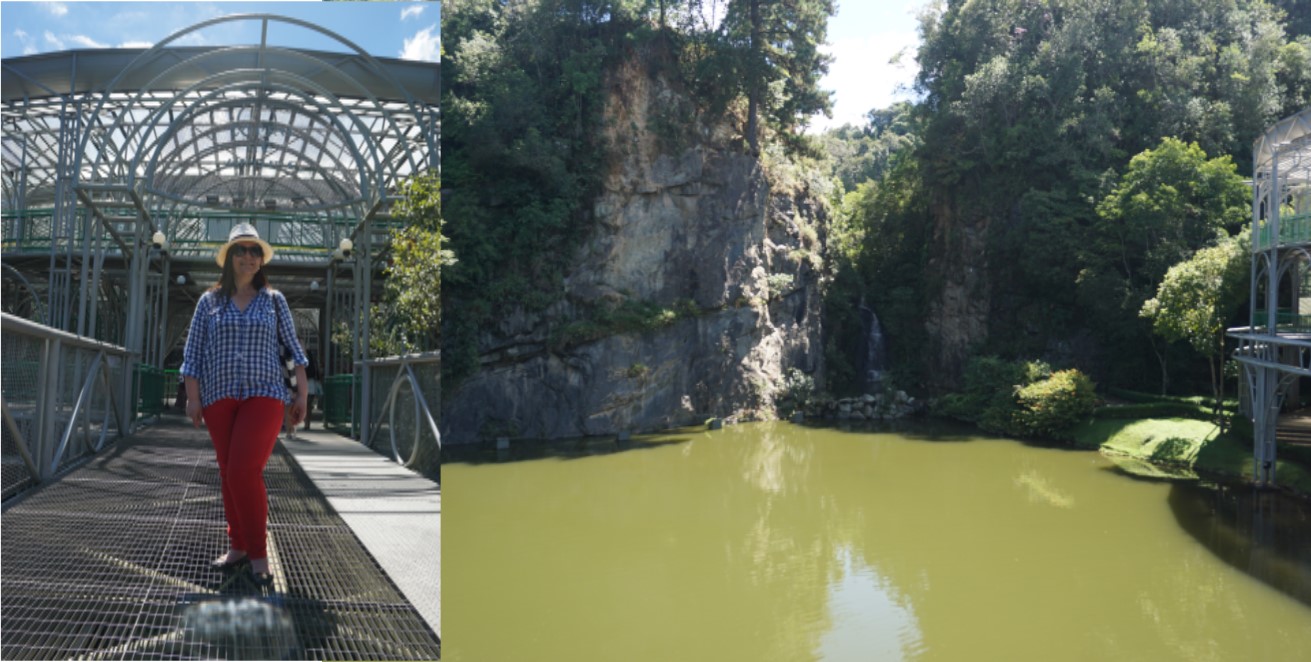
Built in a tube-like structure, the Ópera de Arame, opened in 1992, is a magical space that blends into the nature of its surroundings.
Next to the opera house is the quarry Pedreira Paulo Leminski, which is a stage for great cultural and artistic events in Curitiba. I would take a break here, wander around for a while, have a beer in the bar opposite and wait for the next bus. Although it is possible to walk to Parque TanguÁ from here, I know because I’ve done it.
First time: 10:47 am
Last time: 7:13 pm
18. PARQUE TANGUÁ

An example of urban space being re-utilized. With an area of 450,000 m2 , it was built on old quarries. The highlights can be seen on my blog post. A definite must on this trip. http://www.intercambiohelp4u.com/gringoinbrazil/a-visit-to-parque-tangua-curitiba/
First time: 10:54 am Last time: 7:20 pm
19. PARQUE TINGÜI
Parque Tingüi reminds us of the first occupants of the “Campos de Curitiba” the Indians of the Guarani nation. Worth a visit but depending on the time of year take your insect repellent. My recommendation is not today.
First time: 11:01 am
Last time: 7:27 pm
20. MEMORIAL UCRANIANO
A replica of Saint Michael’s Church, in the Mountain of Tiger, in Mallet, it has a domed roof made of pine and Bronze. Located in Parque Tingüi, it is dedicated to the centennial of the arrival of the Polish immigrants . Don’t get off the bus here
First time: 11:05 am
Last time: 7:30 pm
21. PORTAL ITALIANO
The Portal shows the beginning of the neighbourhood Santa Felicidade, imitating the typical buildings of this Italian immigrant’s neighbourhood. Don’t get off the bus here but go to the next stop at the top of the hill and stop for a well deserved late lunch.
First time: 11:11 am
Last time: 7:36 pm
SANTA FELICIDADE
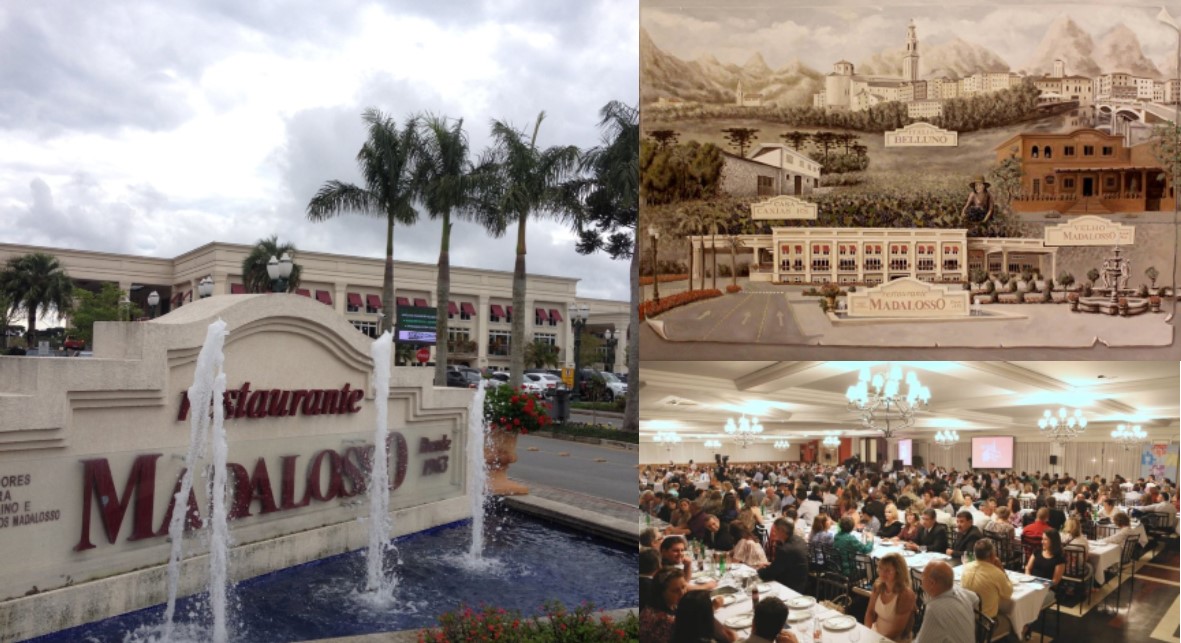
A Colony started in 1878 by Italian immigrants. It used to be Curitiba’s main gastronomic centre and has many typical houses, which are preserved for historical, architectural and sentimental reasons. There are several restaurants to choose from. I recommend the Rodizio Churrascaria Madalosso, as the food is quite good and it is definitely an experience in being one of the largest restaurants I have ever been to being able to seat a few thousand people. Maybe the largest restaurant in South America.
First time: 11:20 am
Last time: 7:45 pm
PARQUE BARIGÜI
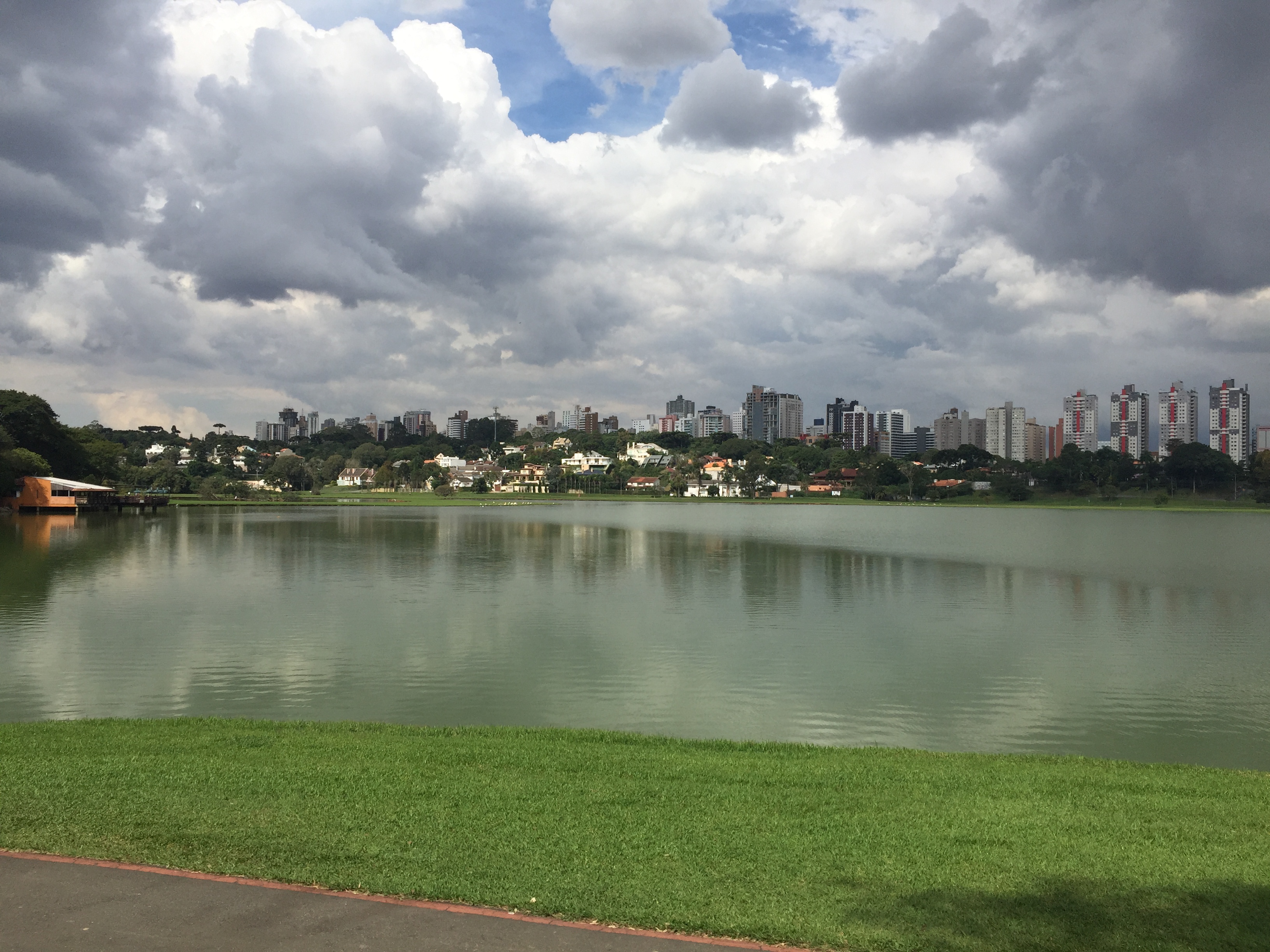
Opened in 1972, it is one of the largest parks in the city, being a safe haven for several native, and migratory animals. It was also chosen by Curitibanos as one of the favourite parks for taking daily walks. The park has gym equipment and an amusement park, besides having a space for exhibitions and events, and an Automobile Museum. It is one of my favourite parks, If you are not too full after lunch it is worth a stop. Check out my video blog. http://www.intercambiohelp4u.com/gringoinbrazil/a-walk-around-parque-barigui/
First time: 11:31 am
Last time: 7:54 pm
TORRE PANORÂMICA
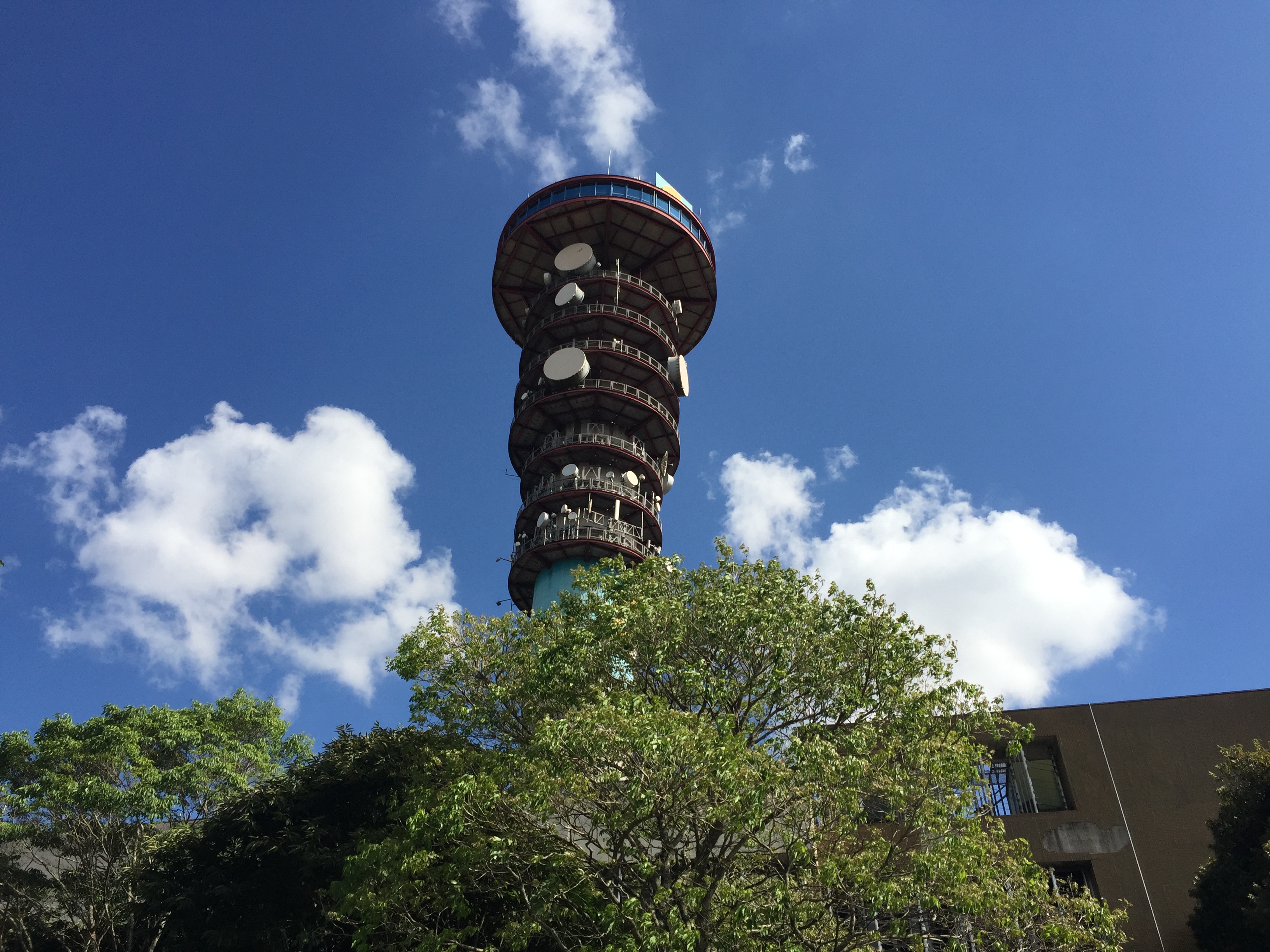
The only telephone tower in Brazil with an observation deck for sight-seeing that is open for visits. One hundred and nine and a half meters high, it was opened in 1991 and it is one of the most visited tourist points in Curitiba. The watch tower has a view of 360°. Worth a visit if time permits and you have a stop left. You can always take a short taxi ride back into the city centre if you have no bus tickets left. See my Video Blog.
First time: 11:37 am
Last time: 7:59 pm
SECTOR HISTÓRICO
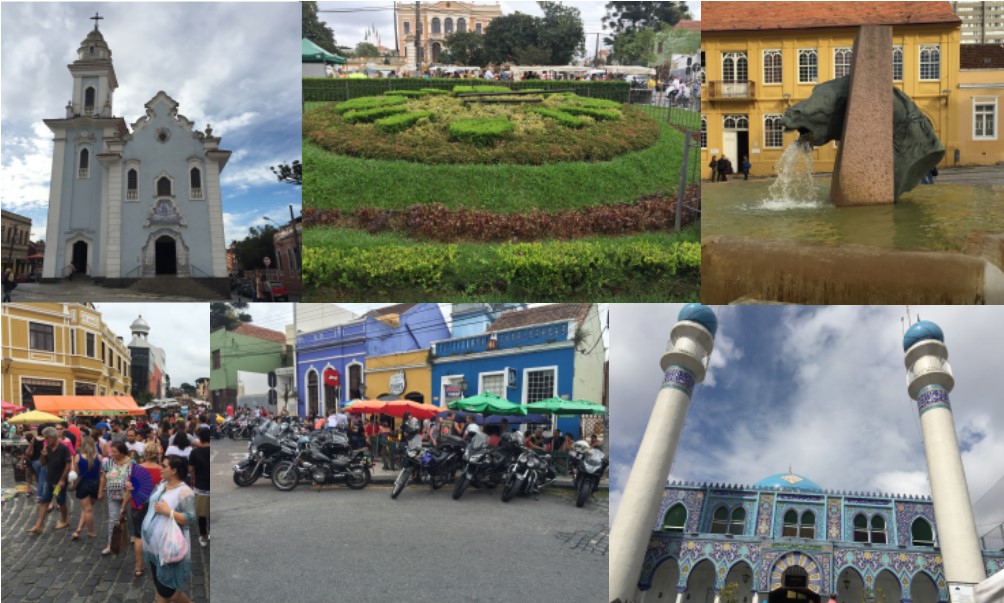
The ruins of the church São Francisco de Paula, which was never completed, the Relógio das Flores (a working clock made of flowers) the fountain “Fonte da Memória”, old churches and reformed old mansions that are turned into cultural spaces, make up the historical sector of the city, where one of the most prominent features is the memorial dedicated to Curitiba, the Memorial de Curitiba. On Sunday mornings there are, at Igreja do Rosário, a mass for the tourists and also on the street, a craft fair. Leave this for a Sunday morning shop before lunch. Here you can find several bars including the famous Bar Alemão.
First time: 11:45 am
Last time: 8:05 pm

